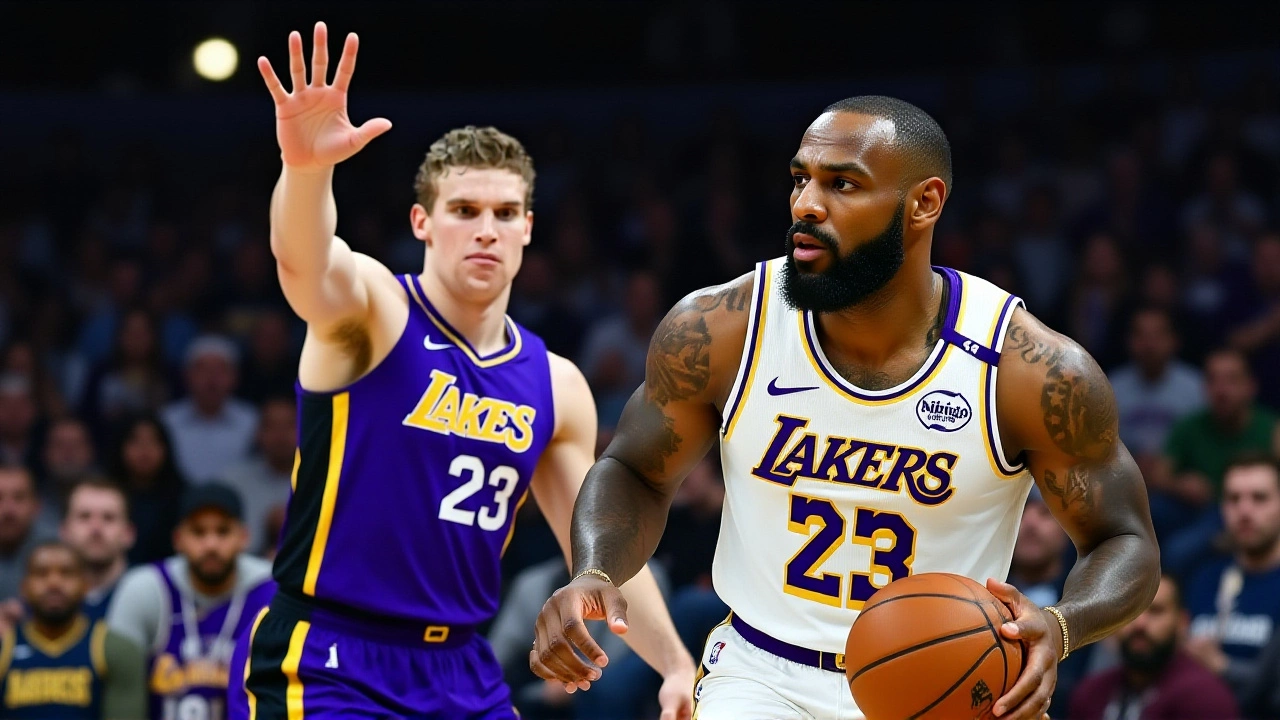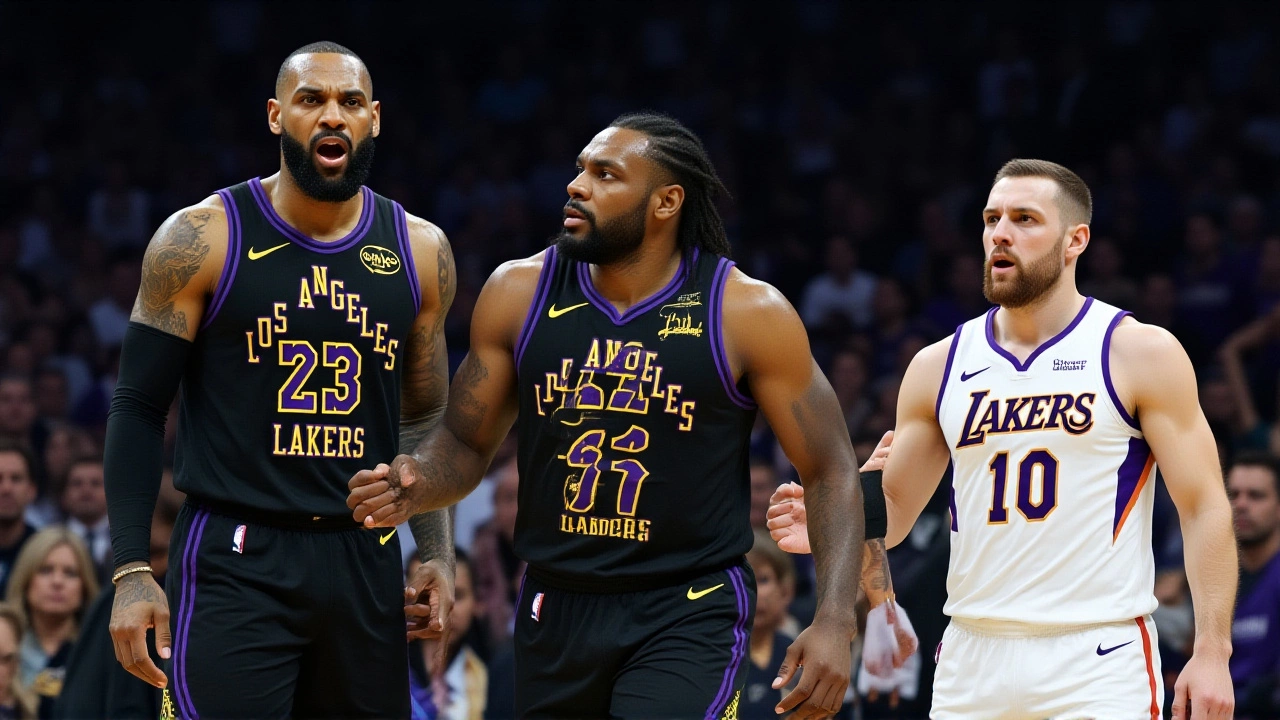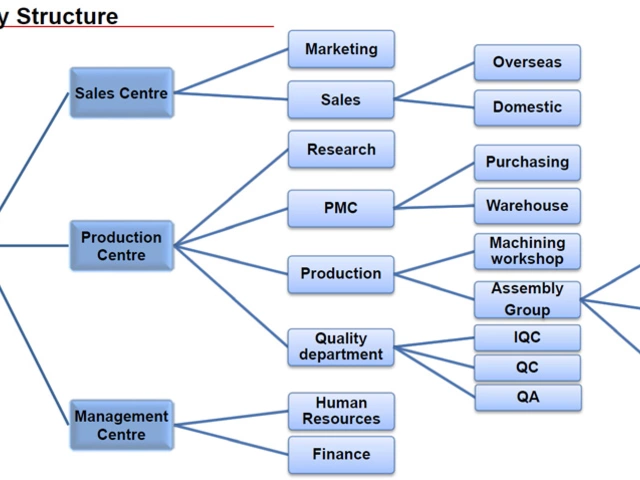At 40 years old, with a body that’s endured 23 NBA seasons and a back that had betrayed him for months, LeBron James stepped onto the court at Crypto.com Arena on November 18, 2025, and did something no one else in NBA history ever had: played his 23rd season. He didn’t drop 40 points. Didn’t dunk over three defenders. Just 11 points, 12 assists, 30 minutes of quiet, calculated dominance. But the numbers don’t tell the story. The silence before his first shot did. The way the arena held its breath. The way Los Angeles Lakers fans, many of whom weren’t born when he entered the league, rose as one when he drained his first three-pointer — a catch-and-shoot over Ace Bailey in the second quarter. This wasn’t just a return. It was a statement carved into the bones of basketball history.
A Record That Defies Time
LeBron James officially passed Vince Carter as the only player in NBA history to appear in 23 seasons. Carter, who played until he was 43, spent 22 years bouncing between franchises, reinventing himself as a veteran leader. James? He’s been the constant. From Akron to Cleveland, Miami, back to Cleveland, then Los Angeles — he’s been the gravitational center of the league since 2003. And now, at 40, with sciatica sidelining him for 14 games after the Lakers’ playoff exit in April, he returned not just to play, but to extend a streak that’s become mythic: 1,293 consecutive games with double-digit points. That streak began on January 6, 2007, when he was 21, a rising force in Cleveland. It’s lasted through injuries, trades, fatherhood, and now, the slow creep of time. He didn’t score in his first 11 minutes Tuesday. But when he did — a driving layup in the third quarter — the crowd didn’t just cheer. They sighed with relief. As if they’d been waiting for this moment since April.The Supporting Cast Steps Up
You can’t carry a team alone, not at 40, not in the modern NBA. That’s where Luka Dončić came in. The 26-year-old Slovenian phenom dropped 37 points, 10 assists, and five rebounds — a performance that didn’t just complement James, but elevated him. Dončić set up James for his second three-pointer, a 28-footer at the buzzer of the first half. After the game, Dončić, still catching his breath, said: “It’s his 23rd season. It’s insane.” That’s the thing — he’s not just a player anymore. He’s a phenomenon. And the Lakers, under new head coach JJ Redick, are finally building around him in a way that feels sustainable. Austin Reaves added 26 points and five rebounds. The Jazz? Lauri Markkanen led them with 31, but they’ve lost five of seven. Their defense couldn’t keep up with the Lakers’ pace, especially after the third quarter, when LA outscored them 37-22.
The Road Back From Sciatica
James hadn’t played since April 24, 2025 — exactly seven months and 14 days before Tuesday’s game. His sciatica, a nerve issue radiating from his lower back down his right side, had been a quiet terror. He didn’t just rest. He rehabbed. Daily physical therapy. Strength drills tailored to his spine. Cardio sessions monitored by the Lakers’ medical team, led by head athletic trainer Cinnamon Chaney. He did his conditioning with the South Bay Lakers, the G League affiliate in El Segundo, while the main team was on the road. He returned to full 5-on-5 practice on November 17. No pain. No soreness. No hesitation. The Lakers’ medical staff, who’ve managed his body since 2018, called it “the cleanest return they’ve seen at this age.”The Numbers That Define a Legacy
James entered the night with 40,769 career points — the NBA’s all-time leader. He’s now 50 games shy of Robert Parish’s record for most games played (1,611). He’s 508 assists behind Jason Kidd for third on the all-time assists list. And with those two three-pointers on Tuesday, he passed Reggie Miller for sixth on the all-time three-pointers list. He’s the only player in NBA history to rank in the top 10 in points, assists, and three-pointers. That’s not just longevity. That’s evolution. He wasn’t just a scorer in 2003. He wasn’t just a playmaker in 2018. Now? He’s everything — a floor general, a shooter, a veteran mentor, and still, somehow, the most dangerous player on the floor when he’s healthy.
What’s Next? A Managed Return
The Lakers aren’t dumb. They know the clock is ticking. James won’t play 35 minutes a night. He won’t play back-to-backs. His minutes will be capped — likely between 30 and 32 for now. But the way he moved Tuesday, the way he read the game, the way he found Dončić on the pick-and-roll — it didn’t look like a man holding on. It looked like a man still in control. The Lakers improved to 8-7 with the win. The Jazz fell to 5-10. But the real story? James’ next game. His next practice. His next three-pointer. Because if he can play 23 seasons, why not 24? The league doesn’t have a precedent for this. And maybe, just maybe, he’s writing the rulebook as he goes.Frequently Asked Questions
How did LeBron James manage to return from sciatica so quickly?
James’ return was the result of a meticulously monitored 14-week rehabilitation program overseen by the Lakers’ medical team, including daily physical therapy, core-strengthening exercises, and low-impact cardiovascular training. He avoided aggressive drills until November 16, 2025, and only returned to full 5-on-5 action after two pain-free practices. His body’s resilience, combined with advanced recovery tech like cryotherapy and neural mobilization techniques, played a key role.
Why is playing 23 seasons such a big deal in the NBA?
No player in NBA history has ever played 23 seasons. The previous record holder, Vince Carter, played 22 seasons from 1998 to 2020. Most stars retire by 35 due to wear and tear. James’ longevity defies physics — he’s played over 58,000 minutes in his career, equivalent to nearly 1,000 full NBA games. His ability to adapt his game from scorer to facilitator has been critical to sustaining his career at this level.
How does LeBron’s 1,293-game double-digit scoring streak compare to other NBA records?
The streak began on January 6, 2007, and has survived injuries, trades, and age. It’s the longest in NBA history — nearly 500 games longer than the next closest (Michael Jordan’s 781). It means James has scored 10+ points in 98% of his career games. Even in his worst seasons, he’s found a way to contribute. That consistency, over nearly two decades, is unmatched in professional sports.
What’s the significance of LeBron passing Reggie Miller on the three-point list?
Reggie Miller was a pure shooter — a specialist who lived beyond the arc. LeBron, once known as a power forward who drove to the rim, has transformed into a volume three-point shooter. He’s now sixth all-time with 2,978 threes. This shift shows his evolution: he’s not just surviving the modern game — he’s mastered it. Few players have reinvented their offensive identity this completely, especially at his age.
Is LeBron likely to break Robert Parish’s games-played record?
He needs 50 more games to pass Parish’s 1,611. With the Lakers scheduled to play 82 games this season, and James expected to play around 65-70, he’s on pace to break the record by early March 2026. Even if he sits out some rest nights, his durability and the team’s playoff push make it highly likely. He’ll become the first player to play 1,600+ games — a milestone once thought impossible at this level.
How has Luka Dončić’s presence changed LeBron’s role on the Lakers?
Dončić’s playmaking has allowed James to operate more as a cutter and spot-up shooter, reducing the strain on his body. Instead of initiating every offense, James now reads defenses and attacks mismatches — a role he perfected in Miami. Their chemistry, especially in pick-and-roll actions, has already produced some of the Lakers’ most efficient offensive sets in years. It’s a symbiotic relationship: Dončić needs James’ gravity, and James needs Dončić’s creation.






